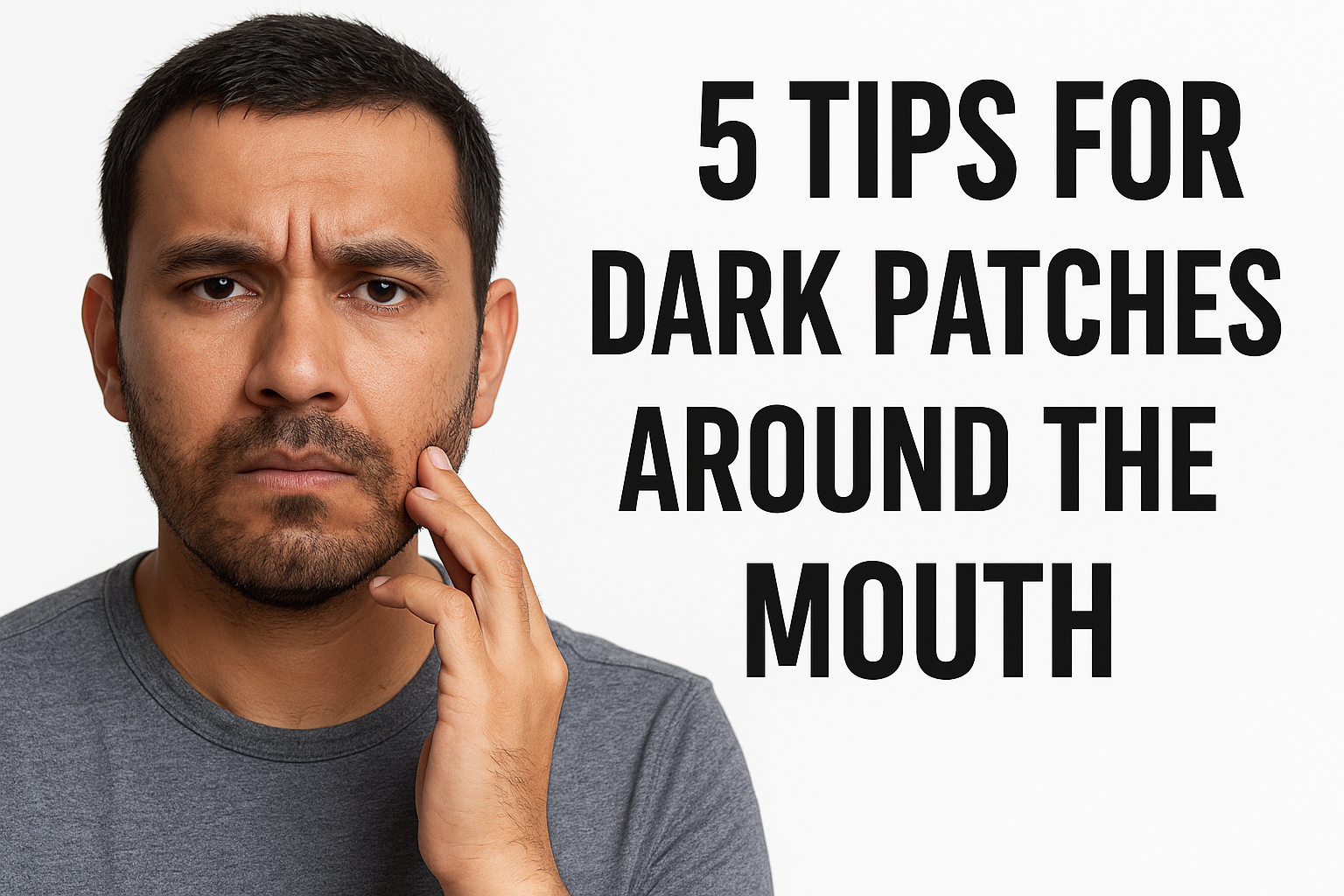Hyperpigmentation around the mouth is a common cosmetic condition often seen in dermatology clinics. It can result from a variety of causes, including healing eczema or seborrheic dermatitis, which is a skin condition that causes flaky, red, sometimes greasy patches around the nose and mouth. Additionally, it can be caused by contact with irritating substances or allergens. As someone who has dealt with eczema, I’ve personally experienced hyperpigmentation around my mouth. In this blog post, I’ll share five tips that have helped me and could help you too.
1. Evaluate Your Pillow and Pillowcase
- Your pillow and pillowcase could be contributing to the irritation around your mouth, harboring bacteria or biofilms that aggravate your skin. Additionally, if your pillow isn’t supporting your head, neck, and shoulders properly at night, it could be causing your face to press against the pillow in ways that lead to further irritation. Saliva leakage while sleeping may lead to moisture accumulation near the mouth, which can result in skin darkening or hyperpigmentation.
- A real game changer for me has been my Sleep & Glow pillow, which I’ve been using for a while now. Crafted with memory foam, this product was developed in collaboration with orthopedic experts to ensure optimal body support during sleep.
Whether you’re a back or side sleeper, the pillow cradles your face in a way that prevents pressure and pooling of saliva.
- The pillowcase is made from Tencel and silk, which repel moisture and reduce the likelihood of product buildup from hair or skin care. Additionally, the pillow is infused with silver ions that help resist bacterial growth and prevent the spread of fungi and viruses.
You can check the link in the description below for a coupon code and more details.
2. Pay close attention to your diet and fluid intake.
- Certain foods and beverages can irritate the skin around the mouth, especially if they contain spices like cinnamon, ginger, or turmeric. The steam from hot foods and drinks can mix with saliva and leave a film of these spices on your skin, contributing to irritation. Likewise, fruits like papaya and pineapple contain enzymes that can be irritating when they come into contact with your skin, especially when combined with saliva.
- To minimize irritation, consider cutting your fruits into bite-sized pieces and eating them with a fork to avoid juices running down your face.
3. Wear Sunscreen Daily
- Wearing sunscreen is essential for preventing hyperpigmentation, but it’s important to use the right type of sunscreen. I recommend a tinted mineral sunscreen, which offers protection against both ultraviolet (UV) radiation and visible light. These two forms of light can contribute to hyperpigmentation and are present even on cloudy days or when you’re indoors.
- Mineral sunscreens containing zinc oxide provide broad-spectrum protection, and tinted formulas add an extra layer of defense with iron oxides, which protect against visible light. My personal favorite is the Color Science Sunforgettable Total Protection Face Shield, but I’ll link other options in the description.
4. Moisturize at Night
- Moisturizing is crucial to repairing the skin barrier, which can be damaged in areas with hyperpigmentation. At night, after cleansing, apply a moisturizer to help heal and soothe your skin. A well-hydrated skin barrier will improve the healing process and reduce irritation.
- I recommend using a moisturizer that is fragrance-free and free of common irritants. My go-to product is La Roche-Posay Cicaplast Baume B5, a thick balm that contains panthenol and zinc to promote skin restoration. It’s been especially helpful for me in managing irritation around the mouth.
5. Try a Sulfur Mask
- A sulfur mask can be a powerful tool in managing hyperpigmentation. Sulfur has anti-inflammatory properties and is great for treating conditions like seborrheic dermatitis and acne, which can contribute to hyperpigmentation. It also gently exfoliates the skin, helping to lift hyperpigmented cells and soothe irritation.
- I recommend the De La Cruz Sulfur Ointment, which I’ve found to be effective without being harsh on the skin. After using the mask, make sure to follow up with a moisturizer to prevent any dryness.
Final Thoughts
- Here are five of my best recommendations to help control hyperpigmentation near the mouth area. I hope you found them helpful! If you’re interested in trying any of the products I’ve mentioned, check the links in the description below for more details and some discount codes.
- If you enjoyed this post, feel free to share it with friends and leave a comment with your own tips or experiences. And as always, don’t forget your sunscreen!
If you don’t want to read, you can watch the video by clicking on this link.

